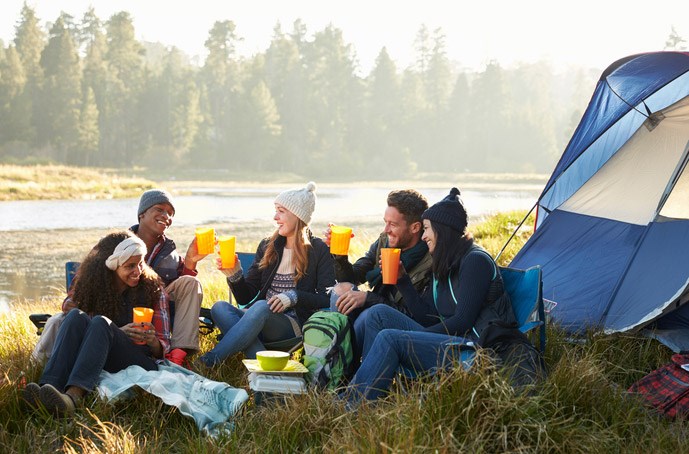Backcountry and primitive camping involve camping in remote and undeveloped areas, away from established campgrounds and amenities. These types of camping experiences offer a deeper connection with nature but require careful planning and preparation. Here are some basics to consider when engaging in backcountry and primitive camping:
- Research and Obtain Permits:
- Research the area you plan to visit, including any regulations, permit requirements, and seasonal restrictions.
- Obtain the necessary permits and ensure you understand the rules and limitations for camping in that area.
- Plan Your Route:
- Plan your route in advance, including the number of days you’ll be out, your intended campsites, and alternate routes in case of emergencies.
- Let someone know your itinerary and expected return date.
- Leave No Trace Principles:
- Follow the Leave No Trace principles to minimize your impact on the environment. These principles include packing out all trash, using established trails and campsites, and avoiding damage to vegetation.
- Gear Selection:
- Choose lightweight and compact gear suitable for backpacking if you’ll be hiking to your campsite.
- Invest in high-quality camping gear, including a suitable backpack, shelter (tent or hammock), sleeping bag, sleeping pad, and cooking equipment.
- Water Sources:
- Identify water sources along your route, and plan how you’ll treat or filter water for drinking to avoid waterborne illnesses.
- Carry enough water or purification methods to last between reliable water sources.
- Food and Cooking:
- Plan your meals and bring lightweight, non-perishable food items.
- Use a camp stove or portable cooking equipment for meal preparation, and store food in bear-resistant containers where necessary.
- Campsite Selection:
- Choose campsites that are at least 200 feet away from lakes and streams to protect water quality.
- Look for established campsites to minimize your impact, and avoid camping on fragile vegetation.
- Be aware of local wildlife and their habits; store food and scented items securely.
- Campfire Regulations:
- Check if campfires are allowed in the area you’re visiting. In many backcountry locations, fires are prohibited to protect the environment.
- If fires are allowed, use established fire rings and follow fire safety guidelines.
- Waste Management:
- Bring a portable toilet or use a designated cathole method to dispose of human waste.
- Pack out used toilet paper and hygiene products in sealable bags.
- Safety and Navigation:
- Carry a map, compass, and/or GPS device and know how to use them.
- Be prepared for sudden weather changes and have appropriate clothing and gear.
- Know basic first aid and carry a well-equipped first aid kit.
- Wildlife Safety:
- Educate yourself about local wildlife and proper wildlife etiquette.
- Use bear-resistant containers for food and other scented items in bear country.
- Be cautious around wildlife, keep a safe distance, and never feed them.
- Respect Quiet Hours:
- Observe quiet hours to minimize noise pollution and respect the tranquility of the wilderness.
- Keep noise to a minimum, especially during early mornings and evenings.
- Emergency Preparedness:
- Carry a communication device like a satellite phone, PLB (Personal Locator Beacon), or a two-way radio for emergencies.
- Know how to signal for help in case of emergencies.
Backcountry and primitive camping offer incredible opportunities to connect with nature, but they require careful planning and responsible behavior to minimize your impact on the environment and ensure your safety. Always prioritize safety and respect for the natural world when embarking on these adventures.

